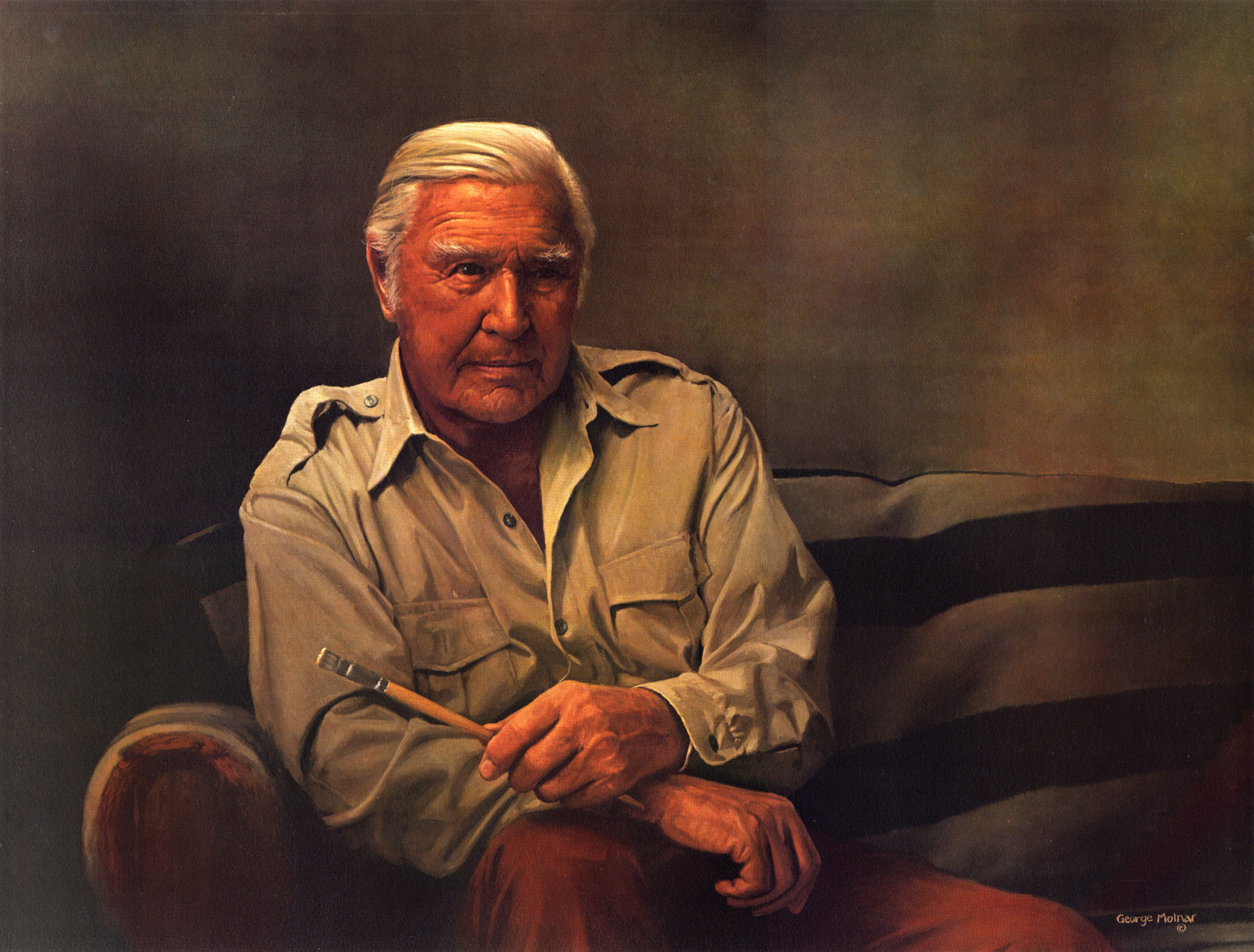An American Story
The story of Olaf Wieghorst is an American Story. He was born in 1899 in Viborg, Denmark. He grew up in Aarhus, Aalborg and Copenhagen where his father owned photography studios and his mother took in sewing to supplement family income.
Olaf was an energetic boy who liked horses and the circus. By the age of nine he was performing as a “miniature acrobat” for the Danish Circus (Tivoli Theater in Copenhagen). At age 12, he snuck into a “Wild West” circus and was hooked. Horses would be his life! He learned how to ride. He worked on a farm. He took odd jobs and worked for a time with a Danish movie company filming low budget westerns.
Olaf read stories of cowboys and the American west. He was determined to see it!
Working as a cabin boy on a steamship, Olaf Wieghorst arrived in the United States in 1918.
Olaf arrived in New York and jumped ship. He had $1.25 in his pocket and the address of a relative. He spoke only three words in English (“yes”, “no” and “sure”) and wandered for three days before a Danish speaking New Yorker helped him find his way.
After settling in and taking a series of odd jobs, Olaf decided the quickest way to become a U.S. Citizen was to join the army. With World War I winding down, he would join if they sent him west. He was assigned to the 5th Cavalry patrolling the U.S.–Mexico border – and was put in charge of the caring for his unit’s horses.
After three years Olaf was discharged at Douglas, Arizona. He bought a horse and rode north, taking a job as a ranch hand – a real cowboy. He would return to New York, join the New York City Police Department and was quickly assigned to the Horse Mounted Division patrolling Central Park.
Olaf Wieghorst was a self-taught artist and took up painting in his time off.
Wieghorst experimented with etchings and other art forms gradually becoming so proficient that Grand Central Art Galleries of the Biltmore Hotel chose to represent him as an artist.
In 1924, Olaf Wieghorst married a Brooklyn girl named Mabel Walters. The couple and their son moved to the El Cajon Valley in 1945. They were to live there for more than forty years. Olaf Wieghorst built a studio which he outfitted with western memorabilia and he also maintained two horses that he kept for use as models and for riding. It was during this time that Olaf Wieghorst devoted all of his energies to painting.
His love of horses and the American west showed in his paintings. Common themes in his western genre art included sweeping landscapes, humble abodes, horses, cowboys and Indians. He depicted the ordinary events of western life, the camp fires, the cattle drives, the stage coaches and the lonely travels of the men and women who inhabited the west.
He was also known as a portrait artist – of horses! Believing that horses were as unique as people, he sought to capture the individuality of each horse he put to canvas. Some of the more famous horses captured in Olaf’s paintings were Gene Autry’s Champion, Tom Morgan’s stallion and Roy Rogers’ Trigger.
By the end of his long career, Olaf sold thousands of paintings and became the highest paid living artist of his time. He appeared in two motion pictures with John Wayne and had paintings hung in the White House.
Olaf lived the American Dream. Determination, hard work, overcoming adversity, building a family – Olaf seized the opportunity America offered.
Today, the Olaf Wieghorst Museum is a testament to both Olaf and the American story. You can join us in keeping the memory – and the American Heritage alive.

